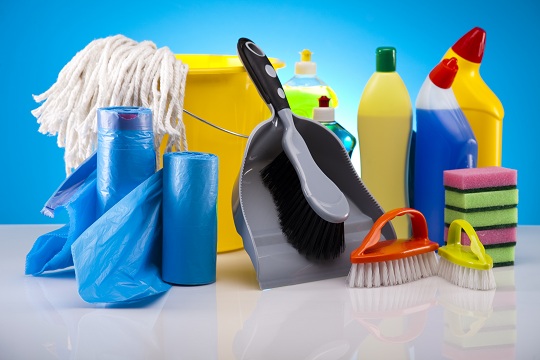
It’s that time of the year when you are getting ready to make your house shine. However, there are many places that urgently need a cleaning but remain hidden from us at first glance.
Oven hoods: Out with the fat
Oven hoods absorb odours and are also a magnet for fat. If we don’t remove, it will clog-up and make the cleaning effort a lot more difficult, not to mention the danger of a fire hazard.
l You can clean it in the dishwasher: Place the filters horizontally in the top compartment and run it empty to avoid food residues in the filters.
l If you have to clean the hood manually: Place the filters in the sink, filled with a double dose of washing up liquid. Leave them to soak, scrub with a brush, and then clean again.
l Don’t forget the inside of the cooker hood: Get rid of the fat and dry with a cloth. Use 100% cotton towels to dry it, as they will be lint free.
Freezer: Bacteria frozen in time
Two thirds of all food poisoning originate from the fridge or freezer’s walls and most bacteria only ‘hibernate’ but don’t die at low temperatures. Therefore, sort all your food in insulated bags when stocking your freezer, as a precautionary measure.
l To clean it, turn it off, remove bottom shelf and place some towels inside to soak up the water, close the door and let it defrost overnight.
l You can sterilise the freezer with a cloth soaked in vinegar cleaner and so freed from the final dormant bacteria.
Dishwasher: Incubator for mould
In cosy warmth and moisture, dangerous bacteria feel safe and can, when not removed, can cause some inflictions on you.
l First, take out removable items — the racks, the salt and fluid caps, the filter, and the rest. Then wipe the inside with a fresh sponge and vinegar.
l Don’t forget to clean the filter: There you can always find leftovers of food in it. Then fill a cup of vinegar into the capsule compartment, and allow the machine to rinse empty at the highest temperature you have (don’t forget to put back the stuff you took out).
Tile joints: Free of mould
Bathtub, sink, and toilet floor: The normal routine to clean the bathroom. However, we easily overlook other places like the tile grouting; on which mould can grow all too quickly. To clean it you can use the Tea Tree Oil. It’s antibacterial and kills mould. Dip a cotton swab in the oil and coat the affected area, generously. After half an hour, this miracle cure will have banished the fungus and your joints will radiate again.
Washing machine: Wash its dirt away
The centrifugal drum always looks so spotless after each wash, but if not cleaned from time to time, it can lead to bad smelling of the clothes even after washing them. Also dirty clothes leave their dirt somewhere — in the drum.
l To clean your washing machine: Put 50g of baking soda directly into the drum and 50ml of vinegar essence in the top compartment. Wash at 60 degrees for a fresh smelling washing machine. You can also get the dispenser clean with a sponge and tap water. Do not forget also to remove the lint and hairs in the rubber that fill the machine.
Telephone, doorknob,remote control: The risk in plain sight
Doorknobs, telephones, light switches, and remote controls come into human contact several times a day, but rarely come into contact with a cloth. But viruses can survive on this type of surface for around 24 hours and other types even longer, so disinfection is key here. A dab of vinegar on a cloth is perfect to combat the potential threat.
Mattress: We never sleep alone
There is an average of 1.5 million mites living in our bed. So don’t forget to give it extra attention in the cleaning. Beat the dust out and vacuum the mattress and leave it in a nice, dry place to air out for a few hours. You should take care of your mattress frequently, to prevent the buildup of moisture and skin that attracts mites in the first place.
l Don’t forget: You should have a look under the bed now and then too, to make sure that no dust and wool remnants have appeared. -Helpling